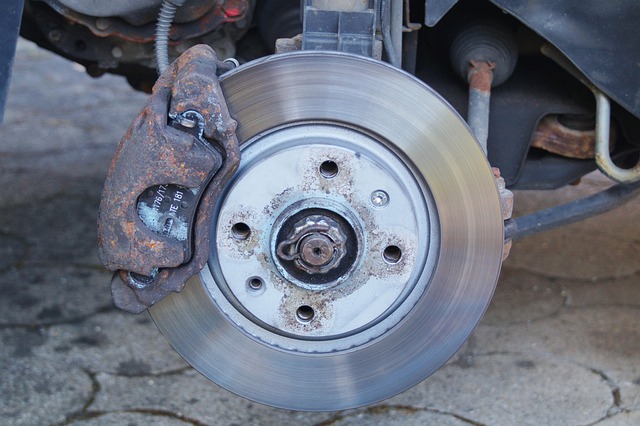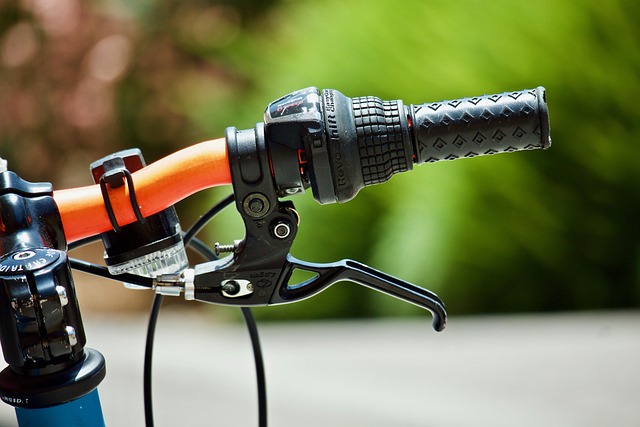Corroded calipers in brake systems cause safety hazards and expensive repairs. Regular inspections with Select Brake Systems services prevent this. When replacing calipers, choose vehicle-specific parts from reputable online stores after identifying your car's make and model. Follow a straightforward installation process, emphasizing proper alignment and connection checks. Post-replacement maintenance includes regular inspections, suitable Select Brake Systems kits for your vehicle type, and routine part replacements for optimal braking performance and safety.
“Are corroded calipers compromising your vehicle’s brake performance? Learn how to identify this common issue and take control of your safety. This comprehensive guide walks you through understanding corroded calipers in select brake systems, choosing the right replacement calipers for your vehicle, performing a step-by-step installation, and maintaining optimal brake health post-replacement. Don’t let corroded parts put you at risk—replace them wisely.”
- Understanding Corroded Calipers in Brake Systems
- Select Suitable Replacement Calipers for Your Vehicle
- Step-by-Step Guide to Replacing Calipers Safely
- Maintaining Brake Health After Caliper Replacement
Understanding Corroded Calipers in Brake Systems

Corroded calipers in brake systems are a common issue that can significantly impact vehicle safety and performance. Over time, exposure to moisture, salt, and other environmental factors can lead to rust and corrosion on caliper components, particularly in regions with harsh weather conditions. This deterioration weakens the caliper’s grip on the brake pads, resulting in reduced braking power and efficiency. Moreover, corroded calipers may cause uneven wear on brake pads and rotors, leading to costly rear brake rotor replacement costs and potential safety hazards.
Regular inspection of your vehicle’s brake system is key to identifying corrosion early. If left unattended, corroded calipers can lead to more severe issues, requiring not just a rear brake rotor replacement but also additional brake rotor machining services to restore proper functionality. To avoid these problems, opt for comprehensive brake maintenance packages that include detailed inspections and necessary repairs, ensuring optimal braking performance and safety for every journey.
Select Suitable Replacement Calipers for Your Vehicle

When replacing corroded calipers, it’s crucial to select the right fit for your vehicle. Different cars require specific types of calipers designed to accommodate their unique brake systems and performance needs. Start by identifying your vehicle make and model, then consult a trusted automotive catalog or expert to find compatible replacement parts. Many reputable online stores offer a wide range of car brake replacement parts, making it easy to source the exact calipers needed.
Remember that the calipers you choose should not only match your vehicle’s specifications but also contribute to overall braking performance and safety. A pre-driven car brake check can help identify potential issues and ensure that your new calipers are up to the task of preventing emergency brake failures, a critical aspect of driving safety.
Step-by-Step Guide to Replacing Calipers Safely

Replacing corroded calipers is a crucial task to ensure your vehicle’s braking systems function optimally. This step-by-step guide will walk you through the process, highlighting key considerations for a safe and effective installation. Begin by identifying the specific Select Brake Systems caliper replacement kit suitable for your vehicle model, keeping in mind that universal brake kits for custom cars or high-performance brake kits for SUVs are available options depending on your needs. Ensure proper tools are at hand—including jack, jack stands, socket sets, and wrenches. Next, elevate your vehicle securely and support it with jack stands before accessing the wheels. Remove the old calipers, carefully noting their orientation to facilitate accurate reassembly. Clean the brake mounting surfaces thoroughly to eliminate rust or debris. Install the new calipers, ensuring they are properly aligned and secured in place with the provided hardware. Double-check all connections and tighten according to manufacturer specifications. Once complete, lower your vehicle and test the braking systems thoroughly before hitting the road again.
Maintaining Brake Health After Caliper Replacement

After successfully replacing corroded calipers, it’s paramount to focus on maintaining the health of your brake system. This involves regular inspection and maintenance checks to ensure optimal performance and safety. One crucial step is to choose the right Select Brake Systems tailored for your vehicle type. For instance, off-road vehicle brake systems require robust components capable of withstanding rugged terrain, whereas custom brake upgrades for sports cars demand a balance between power and finesse.
Selecting the appropriate select brake systems for trucks or any other specific application ensures longevity and enhances braking efficiency. Regularly replacing worn-out parts, bleeding brakes, and checking fluid levels are additional measures that contribute to maintaining peak brake performance. By prioritizing these practices, you not only extend the lifespan of your calipers but also enhance overall vehicle control, making every drive safer and more enjoyable.
Replacing corroded calipers is a crucial step in maintaining your vehicle’s brake health and ensuring optimal performance. By understanding the issue, choosing the right replacement calipers for your specific brake system (Select Brake Systems), and following a safe installation process, you can enhance safety and extend the life of your brakes. Regular maintenance, including timely caliper replacement, is key to preventing costly repairs and keeping your vehicle under control.
